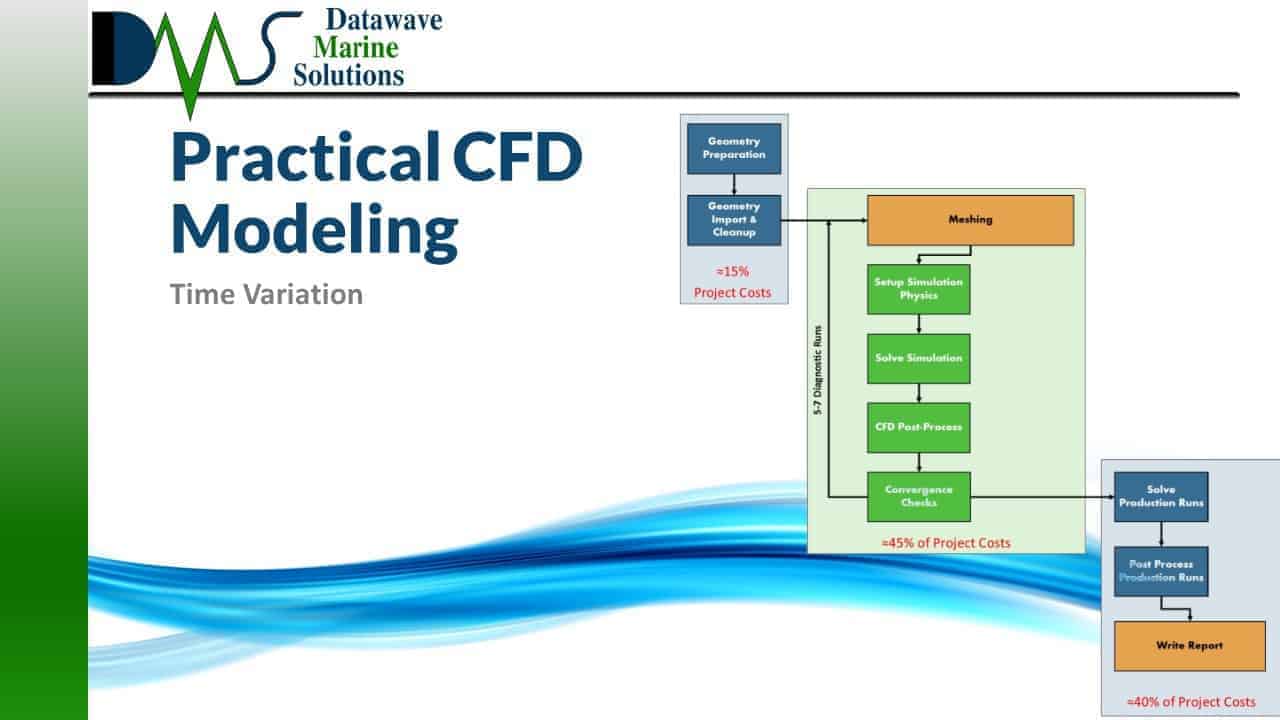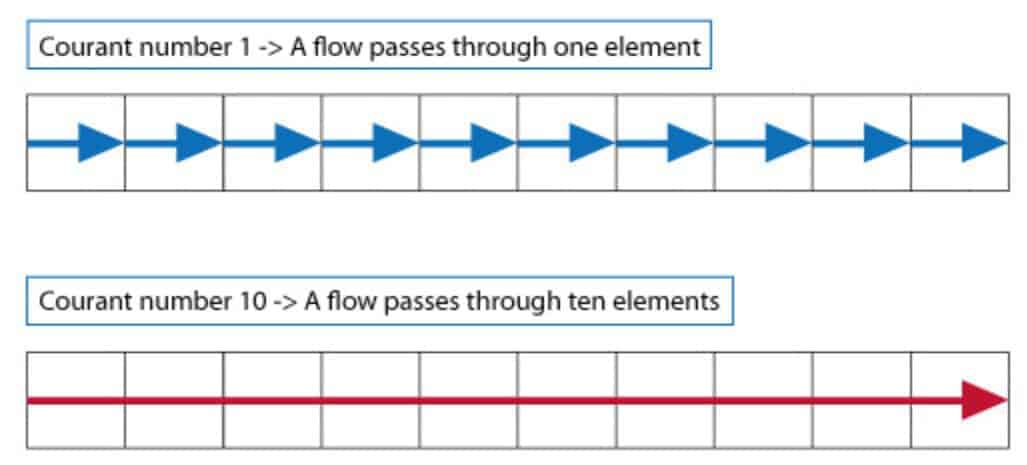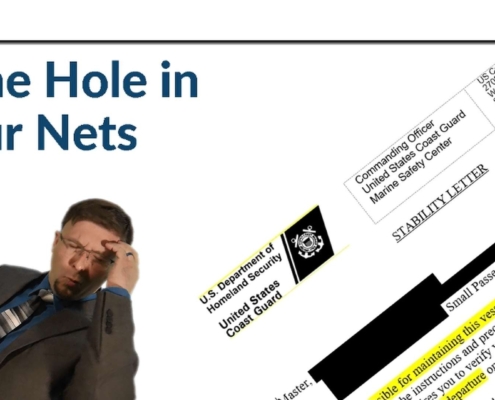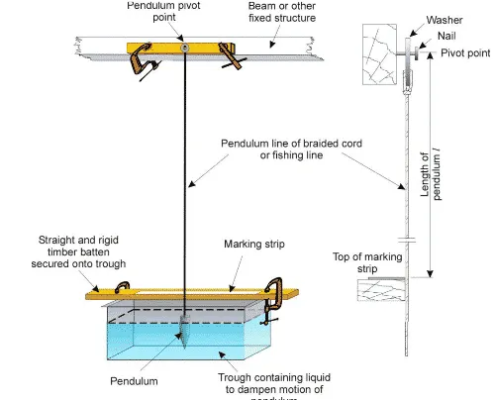When setting the timestep, we turn to the Courant Number for guidance. The Courant Number provides a non-dimensional measurement of the timestep.
In general, we set our timestep to target a Courant Number of 1.0 on the body surface. The Courant Number is best understood through a thought experiment. Examine Figure 3‑1. This demonstrates the distance a fluid particle travels with successive timesteps at two different Courant Numbers. At a Courant Number of 1.0, the particle only travels the distance of one cell in each timestep. For each timestep, the fluid particle recognized the local velocities from each cell. But at a Courant Number of 10, ten cells were skipped in a single timestep. That fluid particle entered a cell using local fluid velocities from 10 cells previous. These large discrepancies form the root of simulation instability in unsteady simulations. When you have large Courant Numbers, the equations update with variables from cells far away from the local conditions, unbalancing the local conditions. Hence the guidance, keep your Courant Number near 1.0.










